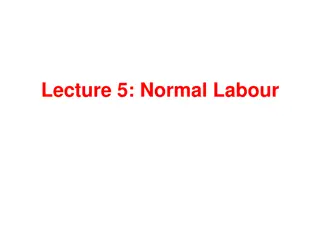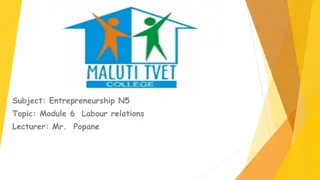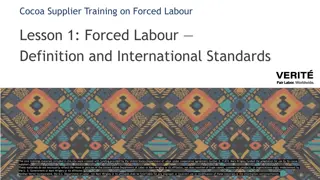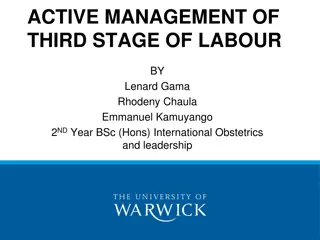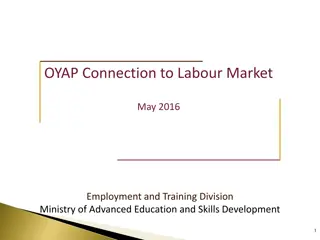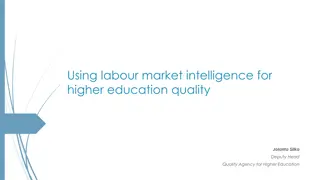Managing Second Stage of Labour and AMTSL
Second stage of labour involves the full dilatation of the cervix until the baby is expelled. Proper management during this stage is crucial, including recognizing imminent signs of delivery, supporting controlled delivery of the head, shoulders, and body, and following the steps of Active Management of the Third Stage of Labour (AMTSL). This process requires close monitoring and timely interventions to ensure a safe delivery for both the mother and the baby.
Download Presentation

Please find below an Image/Link to download the presentation.
The content on the website is provided AS IS for your information and personal use only. It may not be sold, licensed, or shared on other websites without obtaining consent from the author. Download presentation by click this link. If you encounter any issues during the download, it is possible that the publisher has removed the file from their server.
E N D
Presentation Transcript
Learning Objectives By the end of this session, learners will be able to: Describe management of 2nd stage of labour and AMTSL Describe imminent signs of delivery, controlled delivery of head, shoulders and body Describe the importance of three steps of AMTSL 2
What is Second Stage of Labour? Part of labour beginning with full dilatation of cervix and ends with the expulsion of the foetus Normally lasts between 1 2 hours 3
Care during Early part of Second Stage By the time pregnant woman attains full dilatation of cervix, you would have already shifted her to labour room. Watch for signs of imminent delivery (provide supportive care) Gaping of vulva Thinning and bulging of perineum Pouting of anus Head of the baby seen at vulva Urge to push Encourage the woman to push during contractions when she has an urge to do so while taking deep breaths 4
Supporting Delivery of Head Clean the perineum with anti-septic solution with strokes of swabs from above downward Ensure controlled delivery of the head: o Keep one hand gently on the head as it advances with contractions. o Support perineum with other hand and cover anus with pad held in position by palm of the hand during delivery. o Ask the mother to breathe steadily and push only during contraction. o Encourage rapid breathing with mouth open. o Allow spontaneous rotation and restitution of head after delivery 6
Managing Cord Around Neck Feel gently around the baby s neck for presence of umbilical cord If it is loose around the neck, deliver the baby through the loop of the cord, or slip the cord over the baby s head If it is tight around the neck, doubly clamp and cut in between 7
Delivery of Shoulders and Rest of the Body Wait for the spontaneous rotation and delivery of the shoulders. This usually happens within 1-2 minutes of delivery of head Apply gentle pressure downwards to deliver the top (anterior) shoulder Then lift the baby up, towards the mother s abdomen, to deliver the lower (posterior) shoulder Rest of the baby s body follows smoothly Note the time of birth 8
Active Management of Third Stage of Labour (AMTSL) The three critical steps of AMTSL are: Administration of uterotonic drug ( Inj Oxytocin-10IU,IM/ Tab Misoprostol-600mcg,oral) Controlled cord traction Uterine massage Approximately 66% cases of PPH can be prevented if AMTSL is done in all cases after delivery It helps in expulsion of placenta and reduction in blood loss to mother 9
Key Messages Encourage woman to push down only during contractions and after she feels an urge to push Ensure delayed cord clamping and cutting (after 1-3 minutes of delivery of baby) Perform active management of third stage of labour in all cases to help in separation of placenta and prevent PPH: Give uterotonic (injection Oxytocin 10 IU IM) immediately after the delivery of baby Perform controlled cord traction to help deliver the placenta Perform uterine massage 10


